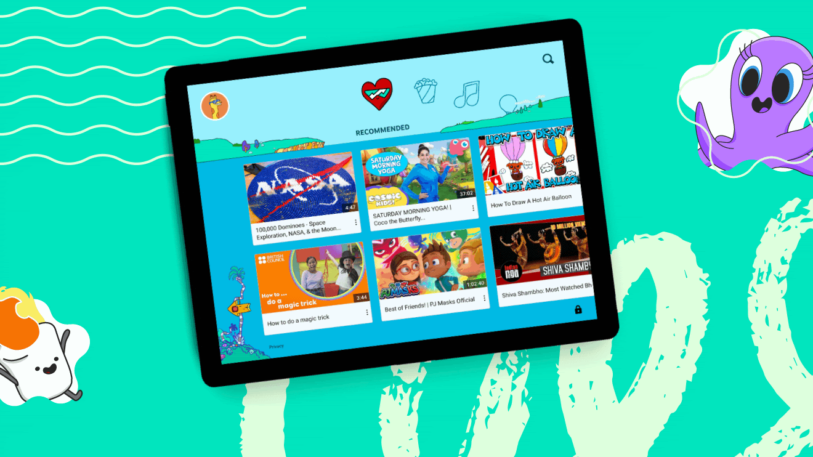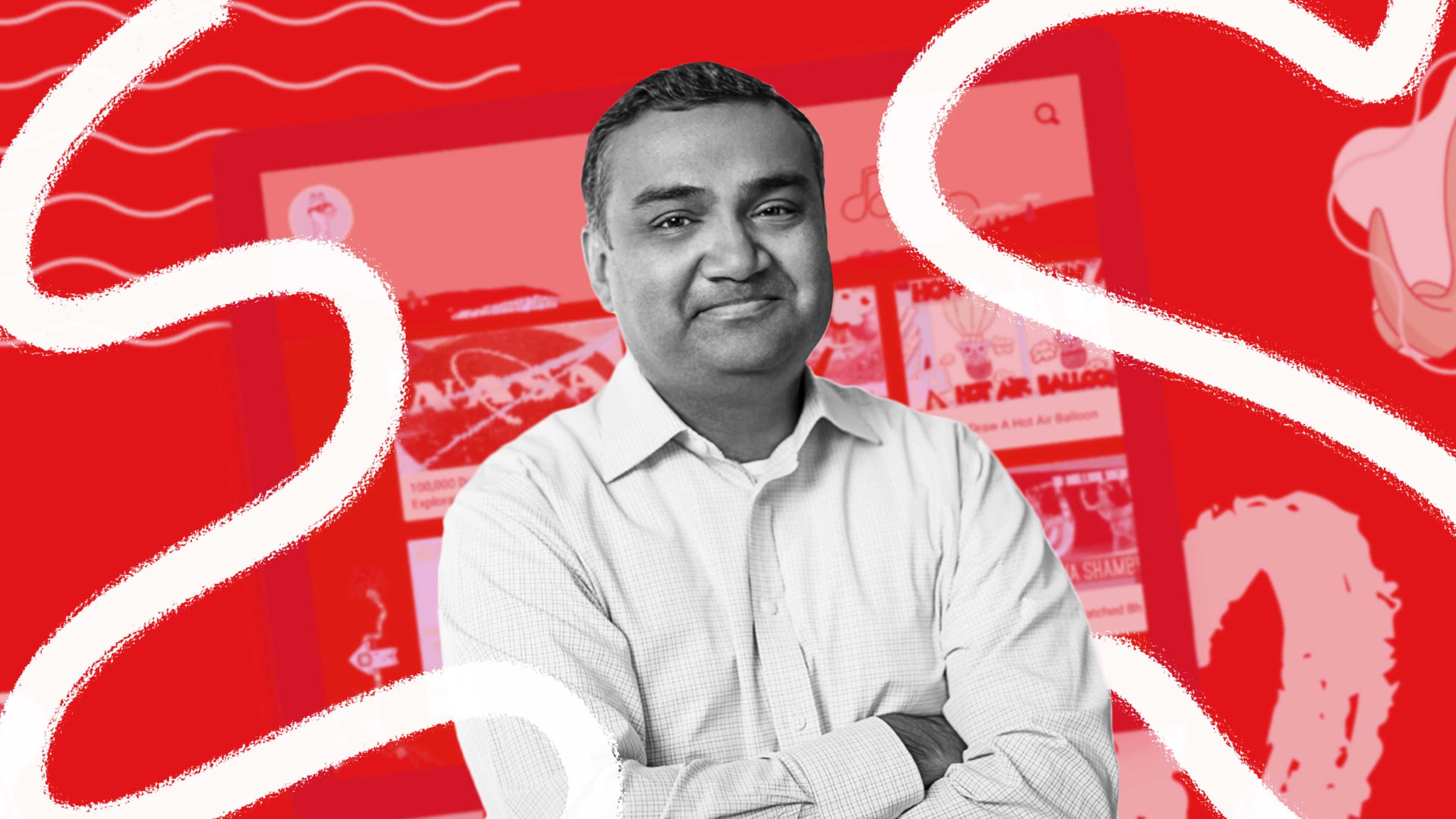Since 2015, Neal Mohan has been chief product officer of YouTube, making him the executive with overall responsibility for its user experience.
More than ever, though, looking at YouTube as one thing with a single experience defies the reality of Mohan’s job. After all, there are several YouTubes: the one where the world goes to watch user-uploaded videos, of course, but also offshoots such as YouTube TV and YouTube Kids. Even if you’re just talking about YouTube in its most classic form, there are two distinct experiences—one for the folks who do all that watching, and one for the people who create the videos.
The bottom line: YouTube isn’t one thing, any more than its parent company, Google, is just a search engine.
I recently spoke with Mohan about YouTube’s product plans for the rest of the year. The most striking thing about them is their sheer diversity: There’s a lot of stuff in the works across YouTube in all its incarnations, all due over the coming weeks and months.
For Mohan, though, there is a unifying principle at work. “The best analogy that comes to mind for me is really just thinking about YouTube as a stage,” he says. Viewers need “the best views possible of the creators that they’re most excited about.” Creators, meanwhile, expect YouTube to “give them all the capabilities that they need to do what they do best.” Just about every new feature Mohan told me about falls into one of these categories—or, in some cases, both of them.
The pandemic and beyond
As with just about any tech company right now, it’s hard to separate where YouTube is going from the impact that the COVID-19 pandemic has had on it. During the first quarter of 2020, which included the first few weeks of the crisis, total watch time for YouTube videos increased by 25%. The company hasn’t disclosed the overall trend in subsequent months.
But as the pandemic dramatically reshaped everyday life, you can probably guess some of the ways that specific YouTube usage patterns changed. Adults stuck inside were increasingly hungry for how-to content on topics such as “cooking at home and exercising at home,” says Mohan. Their offspring spent plenty of time with YouTube Kids, which now has 35 million weekly users, up from 20 million in mid-2019. Events that would have happened in person in times of normalcy went virtual: More than 500,000 channels livestreamed for the first time in 2020, helping to drive a 45% increase in daily YouTube Live streams over the first half of the year.

When I asked Mohan if YouTube pricing had reached an equilibrium, he didn’t respond with a direct ‘yes’ or ‘no.’
Then there’s YouTube TV. Along with all its competitors in cable-TV-like livestreaming, the service started out temptingly cheap and has since hiked prices to a level closer to that of cable. Still, “I feel like we have a great lineup for the price,” says Mohan. He stresses that YouTube TV has been adding channels—most recently Viacom offerings such as Comedy Central and MTV—based on feedback from users.
When I asked Mohan if YouTube pricing had reached an equilibrium, he didn’t respond with a direct “yes” or “no.” But he did mention an upcoming add-on package—with 4K resolution, unlimited simultaneous streams, and the ability to download shows for offline viewing—that will be optional, allowing subscribers to decide for themselves whether to splurge on it.
YouTube TV [Animation: courtesy of Youtube]As for what else we can expect, Mohan also said that viewers have “come to expect YouTube TV to be the pioneer in terms of product innovation, so that’s what my team’s focused on.” He didn’t preannounce any such innovations on their way, but did mention an existing feature as an example: the ability to hide spoilers relating to the scores of sporting events on your DVR.
Taking on TikTok
One of YouTube’s biggest initiatives of 2020 hasn’t reached the U.S. yet. Last September, users in India were the first to get access to YouTube Shorts, a feature that lets smartphone users shoot 15-second videos, add music, and share mini-movies of up to a minute in length. Shorts, in other words, is pretty much the same thing as TikTok, but inside YouTube.
As Instagram’s similarly TikTok-ish Instagram Reels has shown, cloning TikTok doesn’t necessarily make for an instant success. But one YouTube Shorts stat does sound potentially promising: By January, it was getting 3.5 billion views a day in India, which is YouTube’s fastest-growing market overall.

Mohan says that Shorts will land in the U.S. and other countries in the coming weeks. Once it does, it’ll be in more of a head-to-head rivalry with TikTok. Or maybe not. On TikTok, short video is the only content on tap; on YouTube, it will be just one of many items on the menu. As described by Mohan, Shorts sounds more like a supplemental format for YouTube creators than a would-be TikTok killer.
“I view this as another tool in [a creator’s] toolbox, if you will,” he explains. “Another prop on the stage to engage with their audience, build their audience, and because their core audience is already on YouTube.”
Speaking of creators, YouTube is also planning an official rollout for “Applause,” a feature—already in testing—that lets viewers make cash payments to their favorite creators by initiating an on-screen clapping effect. Like existing features such as Super Chat, “it’s a token of my appreciation of some monetary value,” says Mohan, and a way for creators to get paid that goes beyond a share of the revenue from the ads YouTube places on their content. (In total, YouTube says that it’s paid $30 billion to creators—from individuals to media giants—over the past three years.)
The ‘Four R’ moderation framework
One other aspect of recent YouTube history seems inextricable from discussion of its future: the problem of harmful content, and how the service is responding to it. At times, it’s still playing catch up, as when it removed ‘Planet Lockdown’ videos that were awash in pandemic misinformation only after Media Matters reported on them.
But like Facebook and Twitter, YouTube has gradually become more sweeping in its efforts to combat misinformation and other dangerous content. In October, it banned Q Anon content. It says that it’s deleted a half-million videos for spreading falsehoods relating to COVID-19. After the Jan. 6 riot at the U.S. Capitol, it also suspended Donald Trump’s account—though unlike Twitter, it hasn’t announced that it’s evicting the former president permanently.
Who would have thought, before COVID came, that somebody would associate human viruses with 5G technology?”
But “because of COVID and the misinformation that came from it, we had to update the enforcement guidelines in terms of how that policy would apply over a dozen times,” Mohan says. “Who would have thought, before COVID came, that somebody would associate human viruses with 5G technology? I wouldn’t have guessed that a week before that happened, but it did happen.”
Ultimately, YouTube’s moderation philosophy boils down a “four R framework” that “governs our effort to try to be the most responsible platform we can be for our users and our creators all over the world,” says Mohan:
- The company removes “content that’s violations of our community guidelines”
- It raises the profile of “authoritative channels that have proven that they’re relevant and credible on [a] particular topic through their actions over a period of time”
- It reduces “the promotion of content that might not be quite policy violative . . . but might still be borderline or might be potentially spreading harmful misinformation in certain ways”
- It rewards “the 99%-plus of creators who are looking to do the right thing”
Mohan acknowledges that there will be further content moderation challenges ahead. And he adds that moderation isn’t merely a layer that sits on top of YouTube’s core functionality. In fact, keeping problematic content under control sits closer to YouTube’s heart than any specific new feature among the many the company is getting ready to introduce.
“We always want to continue to look at our policies, to change them, whether it’s misinformation, whether it’s hate or harassment,” he says. “And that goes hand in hand with this focus on innovation and new products. All of these focused areas of investment are building on top of that foundation of our responsibility to our users and creators.”
Recognize your brand’s excellence by applying to this year’s Brands That Matter Awards before the early-rate deadline, May 3.
